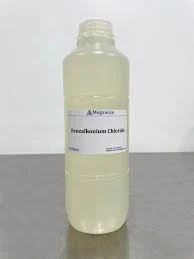coagulation and flocculation
Coagulation and Flocculation Essential Processes in Water Treatment
Coagulation and flocculation are critical processes in the field of water treatment, aimed at removing suspended particles, colloids, and other impurities from water to ensure it is safe for consumption and usage. These processes are particularly essential in drinking water purification, wastewater treatment, and various industrial applications. Understanding coagulation and flocculation, as well as the chemistry behind them, is vital for optimizing water quality and ensuring environmental sustainability.
Understanding Coagulation
Coagulation is the initial step in the water treatment process, where chemical agents known as coagulants are added to water. These coagulants, typically metal salts such as aluminum sulfate (alum) or ferric chloride, have a positive charge that neutralizes the negative charge of suspended particles and colloids in the water. When these particles come together, they form larger aggregates called flocs. Coagulation occurs rapidly, often within minutes, and is crucial for reducing the overall turbidity of water.
The effectiveness of coagulation depends on several factors, including the type and dosage of coagulants used, the temperature of the water, and the pH level. For instance, some coagulants work best at specific pH ranges, which can affect the charge of the particles and their ability to aggregate. By adjusting these parameters, water treatment facilities can optimize coagulation, improving the efficiency of subsequent processes.
The Role of Flocculation
Following coagulation, the flocculation stage begins. Flocculation is a slower process that involves gentle mixing of water to encourage the formation of larger flocs from the smaller aggregates created during coagulation. This is typically achieved through a series of mixing stages, combining both mechanical stirring and natural gravitational settling. The goal of flocculation is to enhance the size and weight of the flocs, making them easier to remove in later stages of treatment.
coagulation and flocculation

During flocculation, additional agents called flocculants may be introduced. These chemicals improve the binding of particles, facilitating the growth of larger, heavier flocs. Polymeric compounds are often used as flocculants, enhancing the overall efficacy of the treatment process. The careful control of mixing speed and duration is essential to balance the collision of particles without breaking apart the fragile flocs.
Importance in Water Treatment
Coagulation and flocculation are integral components of the water treatment process for several reasons. Firstly, they significantly reduce suspended solids, including silt, clay, and organic matter, which contribute to turbidity. This reduction is essential for improving the clarity of water, making it visually appealing and, more importantly, safe for consumption.
Secondly, these processes aid in the removal of pathogens and harmful contaminants, including bacteria, viruses, and heavy metals. By aggregating these impurities into larger particles, they can be more effectively removed during sedimentation or filtration, thus enhancing the overall quality of water.
Moreover, coagulation and flocculation can help in the treatment of wastewater, allowing for the recycling of water for industrial processes and agricultural irrigation. This not only conserves water resources but also reduces the environmental impact of discharges into water bodies.
Conclusion
In conclusion, coagulation and flocculation are vital processes in the treatment of water, serving to eliminate impurities and ensure cleanliness and safety. By understanding the chemistry behind these processes and optimizing their conditions, water treatment facilities can produce high-quality water that meets health and environmental standards. As global water scarcity continues to be a pressing issue, advancements in coagulation and flocculation technologies will play a crucial role in sustainable water management practices, allowing us to address the challenges posed by contamination and resource depletion effectively.
-
LK-319 Special Scale And Corrosion Inhibitor For Steel Plants: Advanced Solutions for Industrial Water SystemsNewsAug.22,2025
-
Flocculant Water Treatment: Essential Chemical Solutions for Purification ProcessesNewsAug.22,2025
-
Isothiazolinones: Versatile Microbial Control Agents for Industrial and Consumer ApplicationsNewsAug.22,2025
-
Scale Inhibitor: Key Solutions for Water System Scale PreventionNewsAug.22,2025
-
Organophosphonates: Versatile Scale Inhibitors for Industrial Water SystemsNewsAug.22,2025
-
Scale and Corrosion Inhibitor: Essential Chemical Solutions for Water System MaintenanceNewsAug.22,2025





